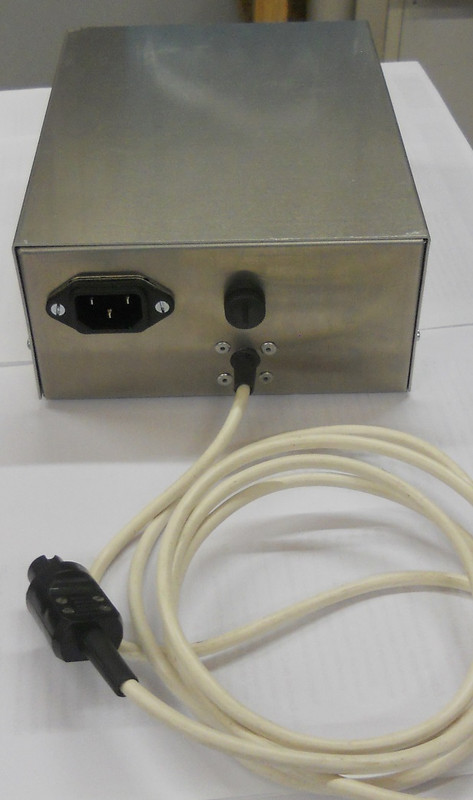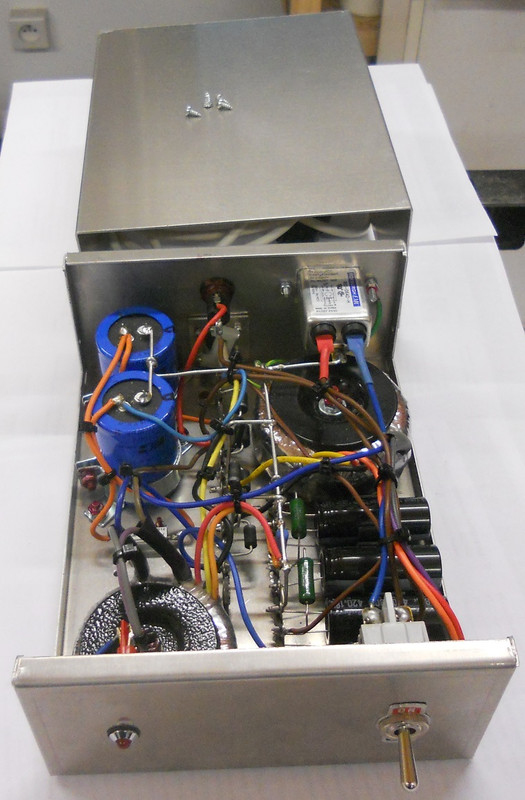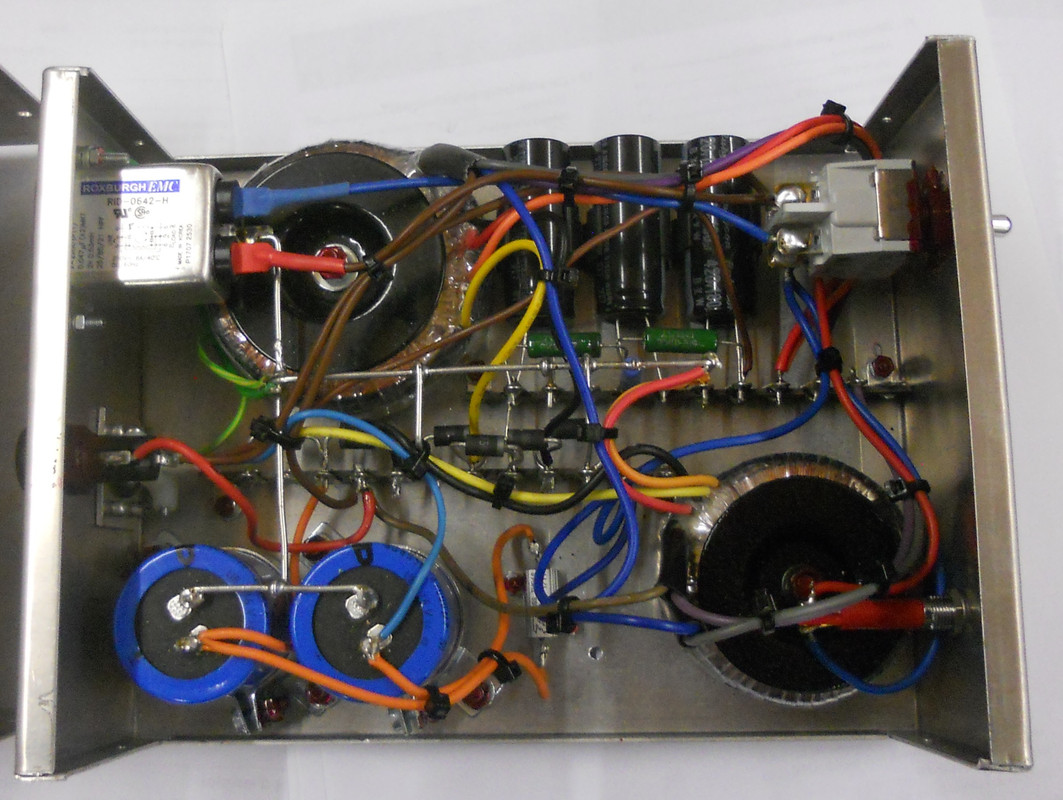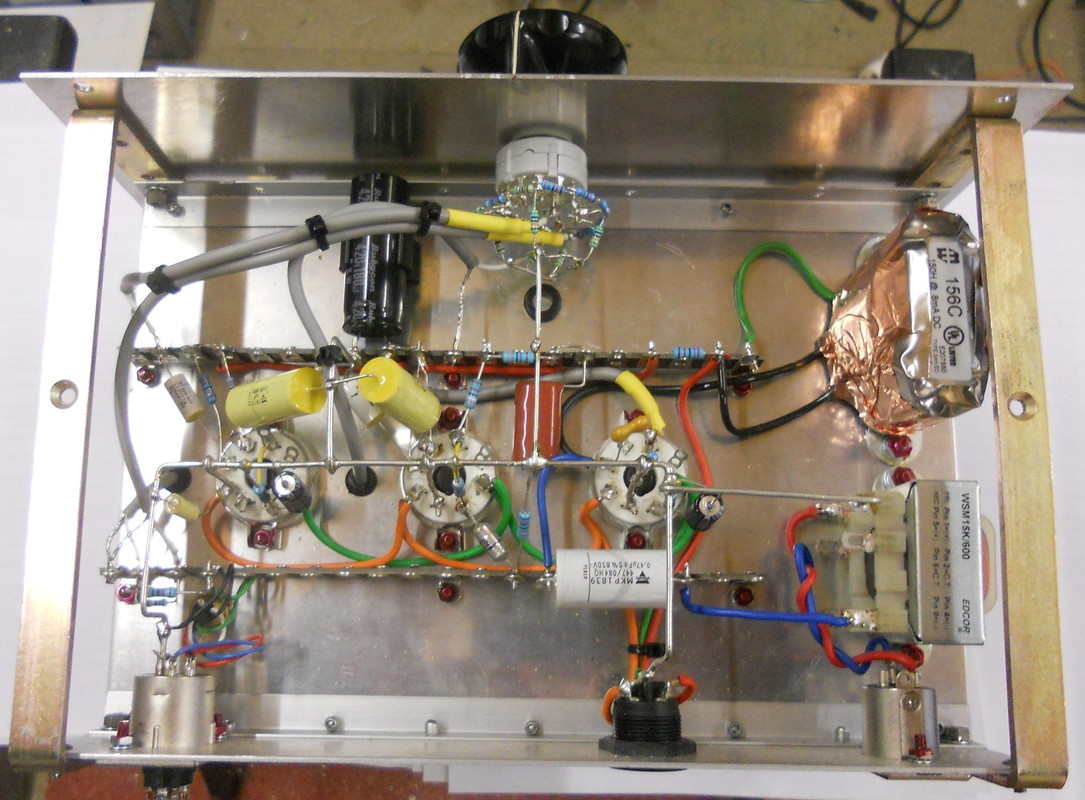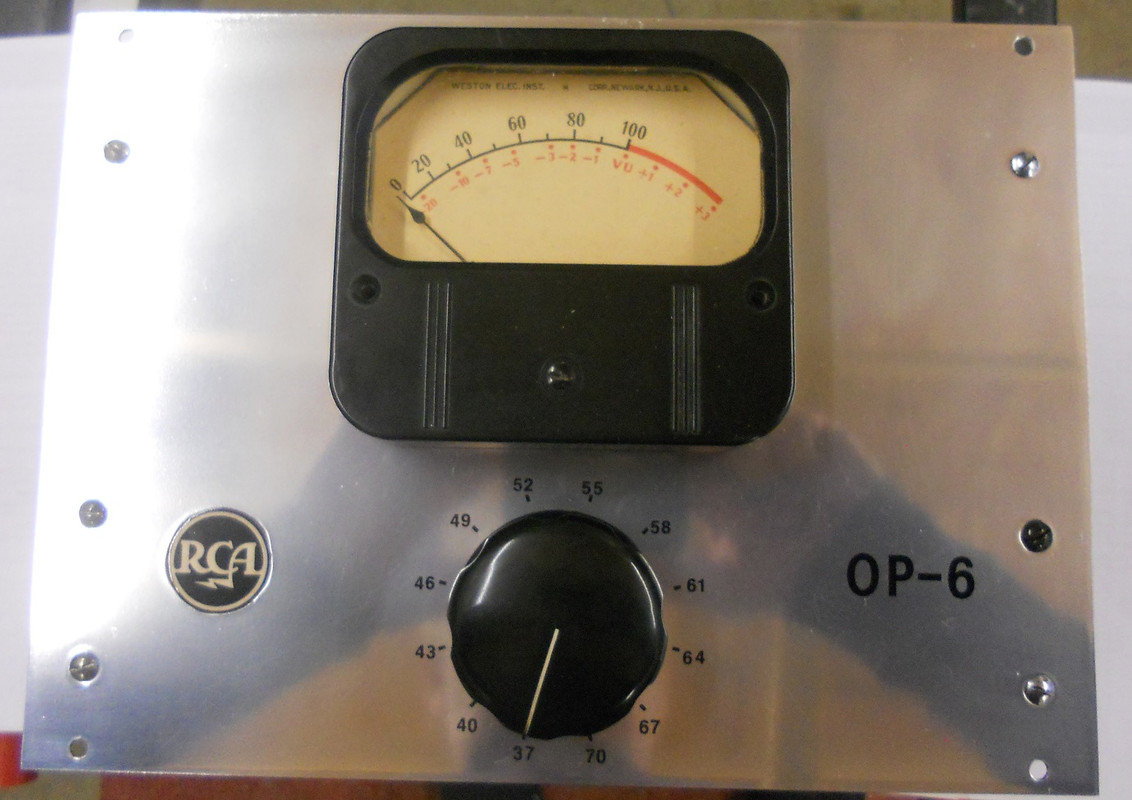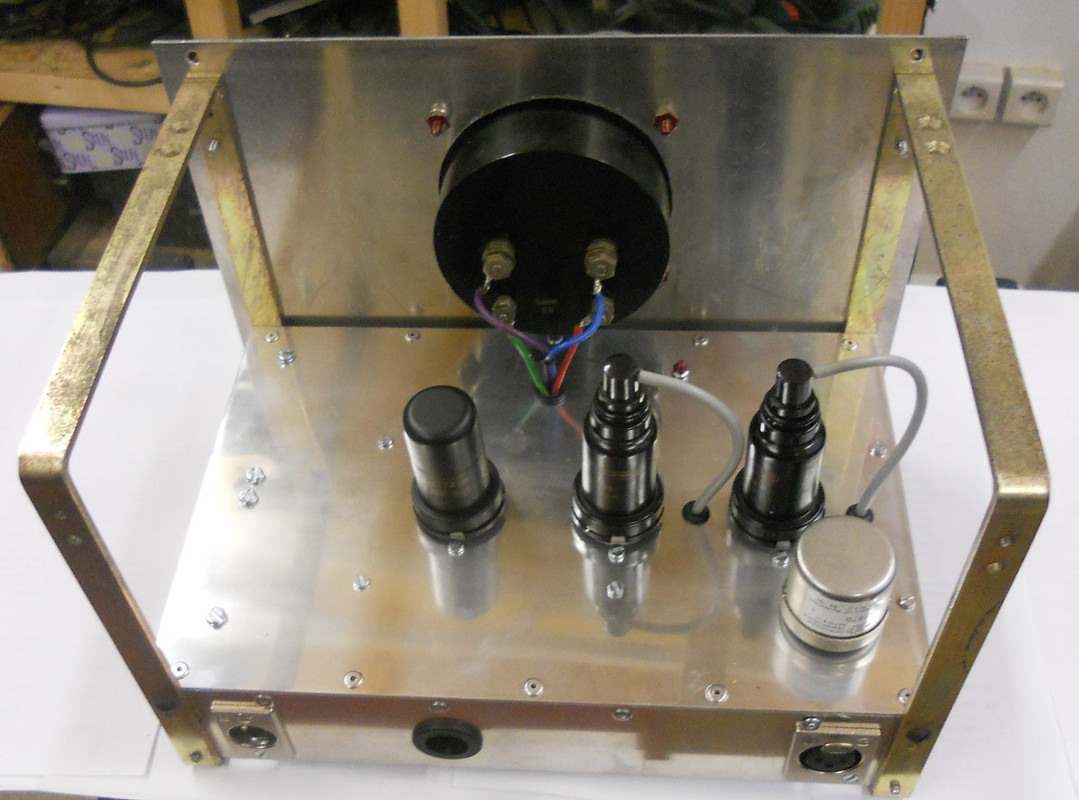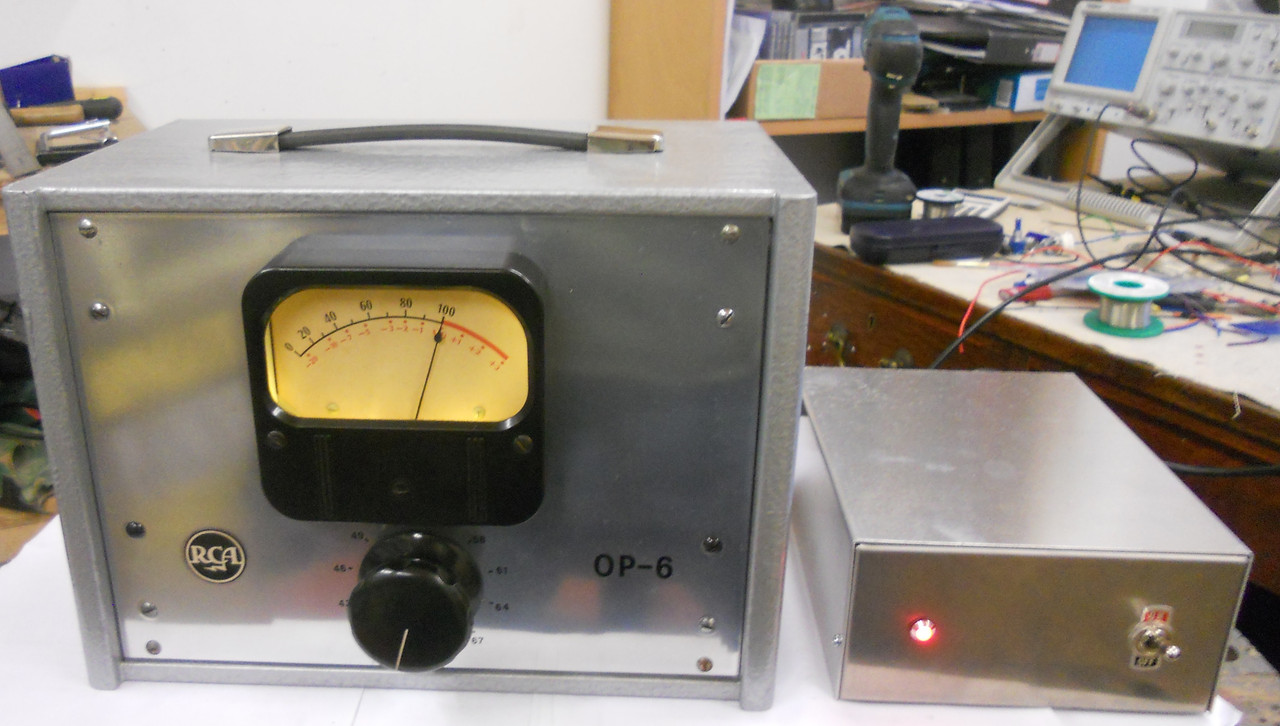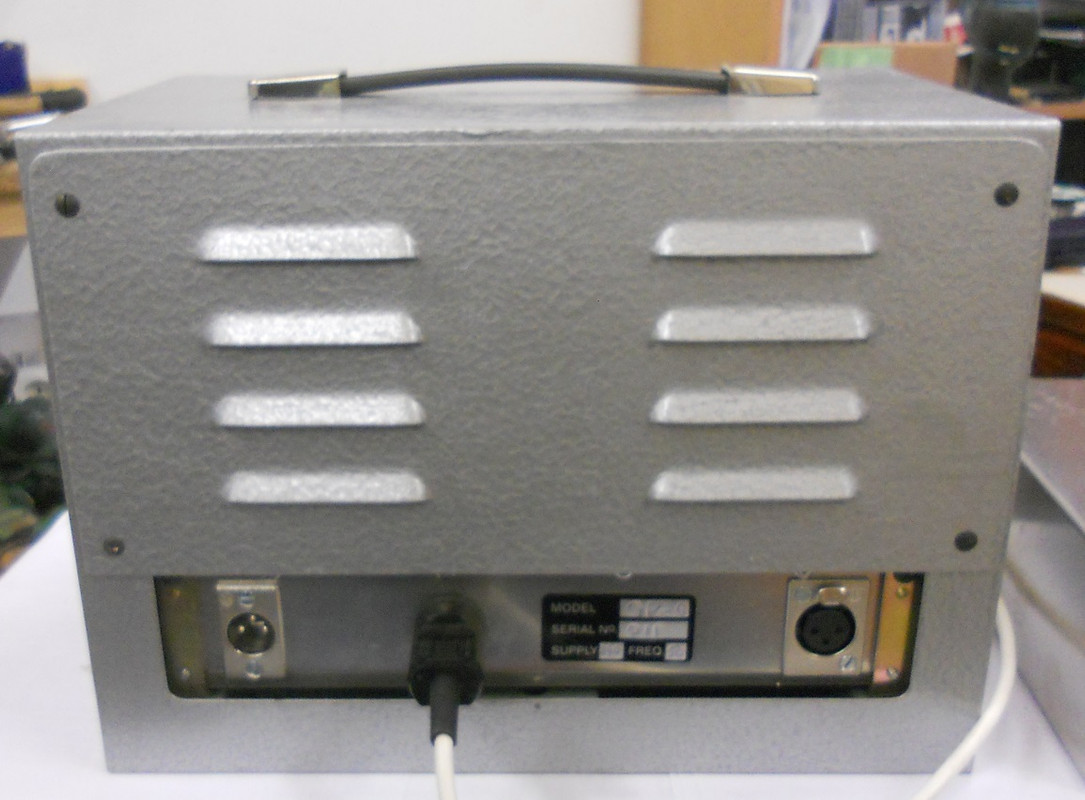The two parts are now finalised, that's the pre-amp and the remote power supply.
These are the final schematics:-
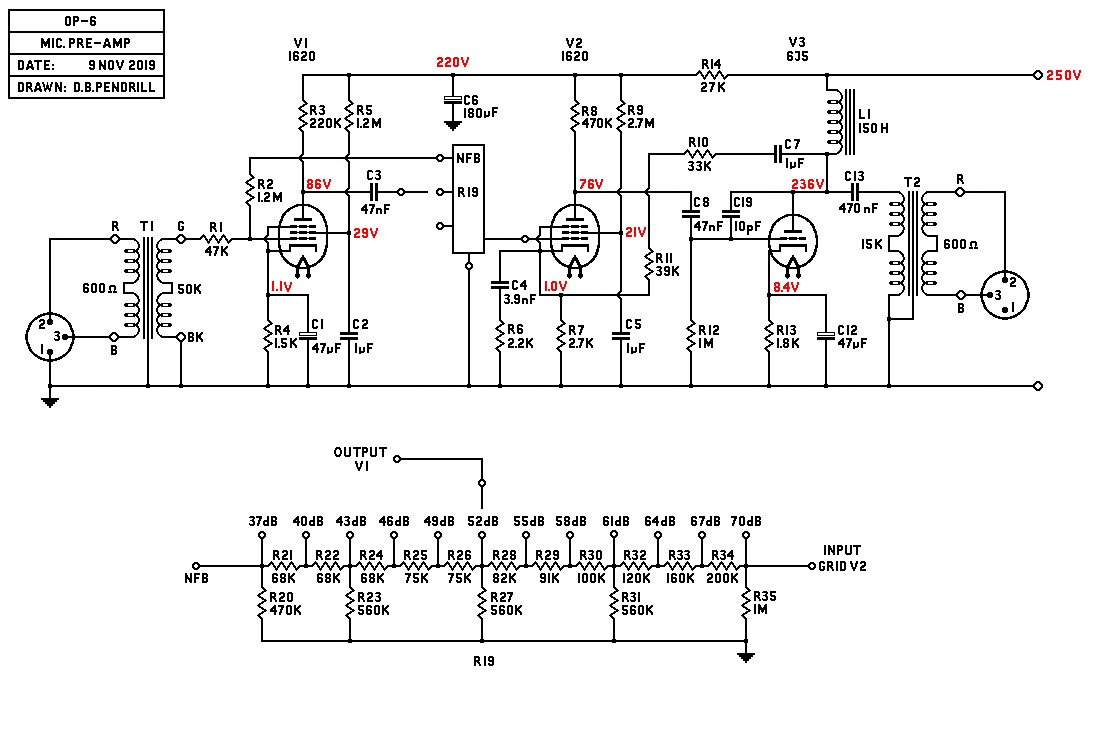
C13 was chosen to maximise the low end which is now flat down to 15Hz.
C19 rolls off the response over 35kHz as there are a lot resonances around 75kHz otherwise.
C4/R6 make the response flat to 20kHz, after which it declines .
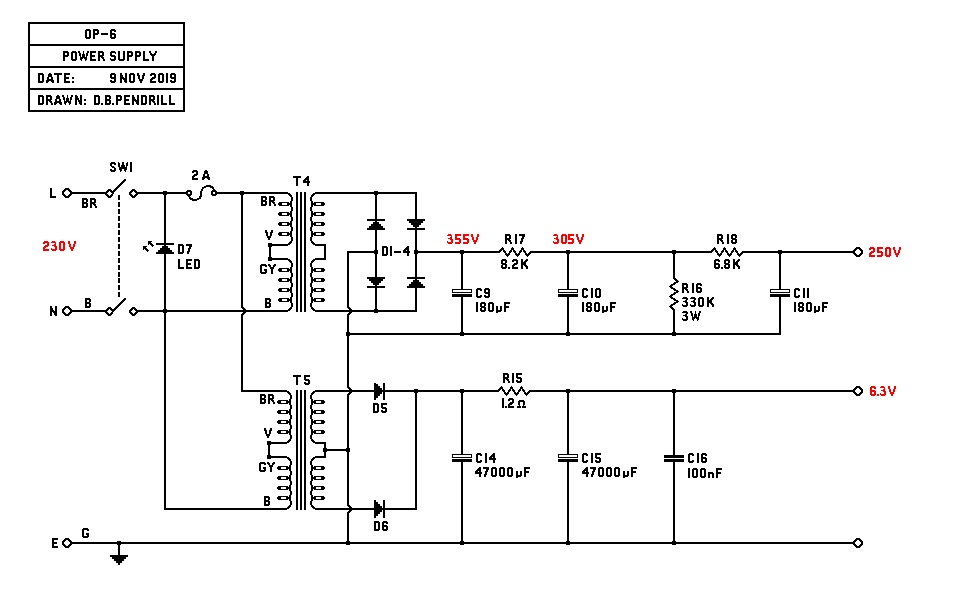
R16 is there to bleed off the voltage after switch-off.
C16 is to remove any HF hash that escapes the smoothing caps.
I'll post some pics later on today along with some more input/output data.
Ian Barter has kindly bought the amp and he will no doubt give his impressions further down the line after I ship it to him, next week.
Best
DaveP
These are the final schematics:-

C13 was chosen to maximise the low end which is now flat down to 15Hz.
C19 rolls off the response over 35kHz as there are a lot resonances around 75kHz otherwise.
C4/R6 make the response flat to 20kHz, after which it declines .

R16 is there to bleed off the voltage after switch-off.
C16 is to remove any HF hash that escapes the smoothing caps.
I'll post some pics later on today along with some more input/output data.
Ian Barter has kindly bought the amp and he will no doubt give his impressions further down the line after I ship it to him, next week.
Best
DaveP




